Community Tools
These programs provide grants, technical assistance, educational resources, and partnership opportunities for communities to actively reduce and manage wildfire risk.
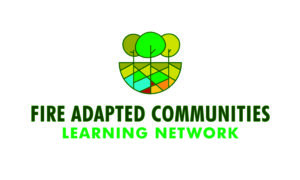
Fire Adapted Communities Learning Network
The Fire Adapted Communities Learning Network connects and supports people and communities who are striving to live more safely with wildfire. The purpose of FAC Net is to exchange information, collaborate to enhance the practice of fire adaptation, and work together and at multiple scales to help communities live safely with fire. This includes embracing resiliency concepts and taking action before, during and after wildfires. They offer a Fire Adapted Communities Self-Assessment Tool (FAC SAT) to help communities assess their level of fire adaptation and track their capacity to live safely with fire over time
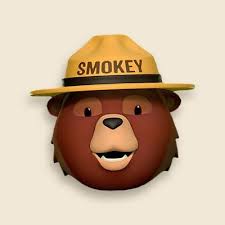
Smokey Bear
The Smokey Bear website provides tips and resources about how to be safe with your campfire, how to use and maintain outdoor equipment and vehicles in ways that prevent sparking a wildfire, how to prevent wildfires from backyard debris burning, and other ways to be fire-smart at home and on the go.
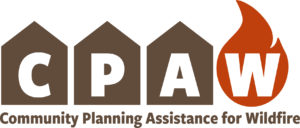
Community Planning Assistance for Wildfire
Community Planning Assistance for Wildfire (CPAW) works with communities to reduce wildfire risk through improved land use planning. CPAW’s team of professional planners, foresters, economists, and risk modelers help communities integrate wildfire mitigation into the development planning process. CPAW services are provided at no cost to the community, and include land use planning recommendations, hazard assessments, custom research, and training.

Firewise USA
A program of the National Fire Protection Association, Firewise USA® teaches people how to adapt to living with wildfire and encourages neighbors to work together and take action now to prevent losses. Firewise USA® is a network of sites from across the nation taking action and ownership in preparing and protecting their homes against the threat of wildfire.
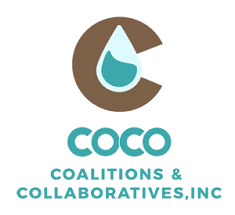
AIM: Action, Implementation & Mitigation
The Action, Implementation, and Mitigation Program (AIM) seeks to increase local capacity and support for wildfire risk reduction activities in high risk communities. Selected participants in AIM will receive technical and financial support and become affiliate members of Coalitions and Collaboratives, Inc. (COCO).
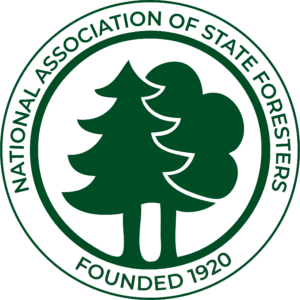
National Association of State Foresters
The National Association of State Foresters is a non-profit organization composed of the directors of forestry agencies in the states, U.S. territories, and the District of Columbia. State foresters manage and protect state and private forests, which encompass nearly two-thirds of the nation’s forests.
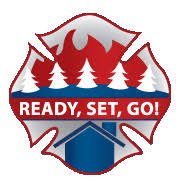
Ready, Set, Go!
The Ready, Set, Go! (RSG) Program seeks to empower fire departments to engage the residents they serve in wildland fire community risk reduction. The RSG! Program provides tools and resources for fire departments to use as they help residents gain an understanding of their wildland fire risk and actions individuals can take to reduce that risk. The RSG! Program is managed by the International Association of Fire Chiefs (IAFC).
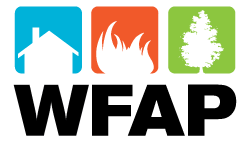
Wildland Fire Assessment Program
The Wildland Fire Assessment Program (WFAP) is a joint effort by the U.S. Forest Service and the National Volunteer Fire Council to provide volunteer firefighters and non-operational personnel, such as Fire Corps members, with training on how to properly conduct assessments for homes located in the wildland-urban interface. The program offers in-person training, online training, and toolkits.
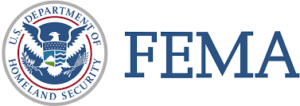
FEMA Hazard Mitigation Grant Program (HMGP)
FEMA’s Hazard Mitigation Grant Program (HMGP) is dedicated to breaking the cycle of disaster damage, reconstruction, and repeated damage. Hazard mitigation includes long-term solutions such as structural retrofits that reduce the impact of disasters in the future. Assistance is available up to 12 months following a presidentially-declared major disaster. Application extensions may be requested.
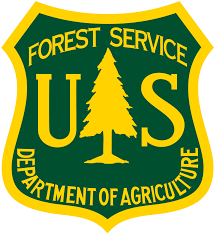
Federal Excess Personal Property Program & Firefighter Property Program
The Federal Excess Personal Property (FEPP) program loans Forest Service-owned vehicles, equipment, and other property to state foresters for wildland and rural firefighting.
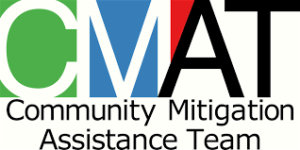
Community Mitigation Assistance Team (CMAT)
Community Mitigation Assistance Teams are a national interagency resource designed to work collaboratively with local partners to build sustainable mitigation programs focused on community fire adaptation actions on the ground. A CMAT works with communities at high risk of wildfire to analyze their mitigation programs and barriers, develop workable solutions to help move mitigation forward, share best mitigation practices for achieving outcomes, and build successful partnerships.
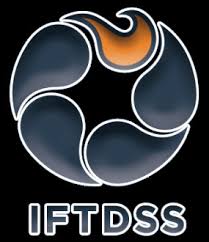
Interagency Fuels Treatment Decision Support System
The Interagency Fuels Treatment Decision Support System (IFTDSS) is a web-based application designed to make fuels treatment planning and analysis more efficient and effective. IFTDSS provides access to data and models through one simple user interface.
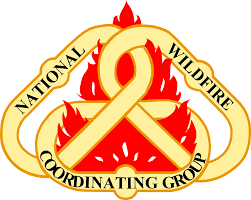
Communication, Education, and Prevention Committee (CEPC)
The Communication, Education, and Prevention Committee (CEPC) of the National Wildfire Coordinating Group provides national leadership, support, and coordination in all areas of wildland fire education and prevention. Prevention and education teams are available to support any geographic area preceding and during periods of high fire danger or fire activity.
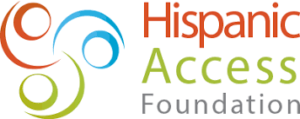
Hispanic Access Foundation Wildfire Toolkit
Latino communities are more vulnerable to experiencing the adverse effects of wildfires. The Hispanic Access Foundation Wildfire Toolkit provides resources about regulations and policies, public and mental health, and response and recovery issues to help communities address Latino considerations related to wildfire.

FEMA Pre-Disaster Mitigation Program
The Federal Emergency Management Administration (FEMA) offers several grant opportunities for wildfire in its Hazard Mitigation Assistance program. The Pre-Disaster Mitigation (PDM) program awards planning and project grants to states, territories, federally recognized tribes, and local communities to implement a sustained, pre-disaster natural hazard mitigation program to raise public awareness about taking action before disaster strikes.
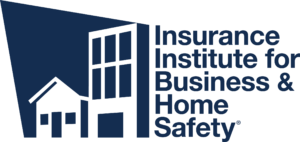
Disaster Safety
Disaster Safety features projects to help home and business owners protect their property from damage caused by wildfire and other natural disasters. This site is a product of the Insurance Institute for Business & Home Safety (IBHS)—a nonprofit, scientific research and communications organization supported solely by property insurers and reinsurers.
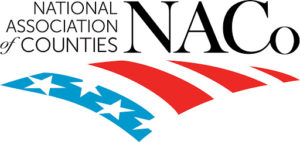
NACo County Wildfire Playbook
The National Association of Counties (NACo) produced this county leadership guide to help communities become more fire adapted and learn to live with wildland fire. The playbook has been designed by county commissioners, for county commissioners, as they endeavor to fortify and protect communities from high severity impacts of wildland fire.

American Planning Association: Planning the Wildland-Urban Interface
This free guide from the American Planning Association offers planners an in-depth introduction to the WUI and wildfire basics, covering challenges, trends, and historical context along with the latest wildfire science. It then moves to solutions, providing a holistic planning framework and practical guidance on how to address WUI and wildfire challenges in plans, policies, and regulations.

Populations at Risk
Populations at Risk– a tool from Headwaters Economics–generates free, customized reports with socioeconomic information about populations more likely to experience adverse social, health, or economic outcomes due to their race, age, gender, poverty status, or other factors. Reports use data from the Census’ American Community Survey (ACS) and are available at multiple scales, from neighborhoods to states.

Coalition of Prescribed Fire Councils
The overarching goal of the Coalition is to create one voice to assist fire practitioners, policymakers, regulators, and citizens with issues surrounding prescribed fire use. The Coalition’s core mission is to promote the appropriate use of prescribed fire for enhancing public safety, managing resources, and sustaining environment quality. In addition, the Coalition encourages and facilitates the organization of prescribed fire councils in states that lack active councils.
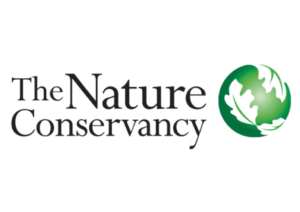
TREX Prescribed Fire Training Exchanges
Prescribed Fire Training Exchanges (TREX) and cooperative burns provide experiential training that builds robust local capacity for fire management and offers professional fire practitioners a more holistic perspective—while implementing treatments that support community and landscape objectives. The key focus of TREX is promoting the spread of effective cooperative burning—helping diverse partners leverage skills, resources and staff in ways that maximize opportunities for outreach, treatment and training.

Joint Chiefs’ Landscape Restoration Partnership
USDA’s Forest Service and Natural Resources Conservation Service are working together to improve the health of forests where public forests and grasslands connect to privately owned lands. Through the Joint Chiefs’ Landscape Restoration Partnership, the two USDA agencies are restoring landscapes, reducing wildfire threats to communities and landowners, protecting water quality and enhancing wildlife habitat.

After the Flames
After the Flames is a curated list of post-fire recovery and restoration information. The resources are useful for communities as they work to establish plans and priorities that protect citizens, homes, essential infrastructure, and resources from the destruction that occurs after a catastrophic wildfire. After the Flames is an initiative of Coalitions and Collaboratives, Inc. (COCO).

Neighborhoods at Risk
Neighborhoods at Risk– a tool from Headwaters Economics–generates customized, interactive maps and reports that describe characteristics of potentially vulnerable neighborhoods (by census tract). See where impacts from climate change are likely to impact the most vulnerable people and view community-level climate projections for temperature and precipitation.
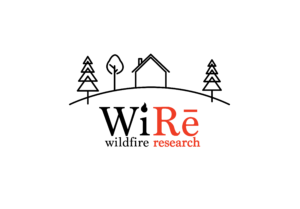
WiRē
The Wildfire Research (WiRē) Center is a nonprofit organization that works with wildfire practitioners to seek locally-tailored pathways to create fire adapted communities. The WiRē Center builds on the findings and the approach of the WiRē Team, a decade-plus partnership between wildfire practitioners and researchers focusing on new approaches to integrating local social science into wildfire education and mitigation programs.

Firetopia Land Use Planning Toolkit
The Firetopia Land Use Planning Toolkit includes sample code language, community case studies, and best practices for creating wildfire-resilient land use planning practices. Firetopia addresses community plans, land development regulations, building and fire codes, and funding. It was created by the Community Planning Assistance for Wildfire (CPAW) program.

Government Alliance on Race & Equity
The Government Alliance on Race and Equity (GARE) is working to achieve racial equity throughout the nation. Tools and resources available through GARE include issue papers and toolkits, including a Racial Equity tool that provides a broad framework for communities seeking to better integrate racial equity into their work.

Equity Foundations Training
The Urban Sustainability Director’s Network created this holistic curriculum of webinars, videos, and worksheets to help local government staff to apply an equity lens to sustainability projects. The independent study program is available for free.

Limited English Proficiency
LEP.gov provides resources and information to expand and improve language access for individuals with limited English proficiency. The site provides data and language maps as well as guidance and resources for those working in emergency preparedness.
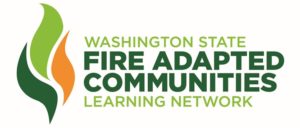
Community Engagement Toolkit
These free toolkits each contain a 3-part video series, presentation template with facilitator’s notes, and sample agendas (including resource links). The videos are in Spanish with English subtitles and cover topics including landscapes, communities, evacuation, smoke, home hardening, and resident recovery.

Ready.Gov
Ready.gov provides free information for all people seeking to prepare for disasters. This resource includes material tailored to individuals with access and functional needs. Information includes important planning considerations, emergency communication plan templates, and videos with open captions and American Sign Language.

Capacity-Building Toolkit for including Aging and Disability Networks in Emergency Planning
Developed by the US Department of Health and Human Services Office of the Assistant Secretary for Preparedness and Response in coordination with the National Association of County and City Health Officials, this free toolkit provides a resources guide for aging and disability networks to plan for and respond to disasters. Content is designed to support those with access and functional needs.

Equitable Development and Environmental Justice
Developed by the Environmental Protection Agency, this free toolkit provides resources for planners in meeting the needs of underserved communities through policies and programs.

Wildfire Safety Pictographs
Developed by FEMA’s U.S. Fire Administration, these free pictographs provide visual wildfire prevention messages. Using pictographs can help overcome language and literacy barriers.

USFS Smoke Ready
This site is a compilation of information on how to be smoke ready and is intended for use by land management, public health, and environmental agencies; incident management teams and emergency responders; local governments, non-governmental organizations, and the general public. It includes messaging and resources in multiple languages.

Fire Prevention and Safety (FP&S) Grant Program
FEMA’s Fire Prevention and Safety (FP&S) grant program provides funding for fire prevention programs and supports firefighter health and safety research and development. Wildland urban interface projects such as community risk assessments, adoption or reinstatement of WUI fire codes, and WUI education/awareness projects are funded.

Building Resilient Infrastructure and Communities (BRIC)
FEMA’s Building Resilient Infrastructure and Communities (BRIC) program provides support to states, local communities, Tribes, the District of Columbia, and territories as they undertake hazard mitigation projects, reducing the risks they face from disasters and natural hazards.
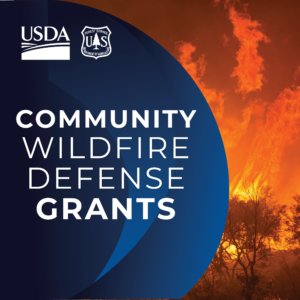
Community Wildfire Defense Grants (CWDG)
The Community Wildfire Defense Grant (CWDG) program provides grants to communities at risk from wildfire to develop or revise their community wildfire protection plans and carry out mitigation projects described within those plans. It is administered by the USDA Forest Service.

Landscape Scale Restoration (LSR) Program
The Landscape Scale Restoration (LSR) program is a Forest Service State and Private Forestry competitive grant program that promotes collaborative, science-based restoration of priority forest landscapes and furthers priorities identified in State Forest Action Plans or equivalent restoration strategies. LSR projects cross multiple jurisdictions, including Tribal, state and local government, and private forest land, to address large-scale issues such as wildfire risk reduction, watershed protection and restoration, and the spread of invasive species, insect infestation, and disease.

Emergency Assistance for Livestock, Honey Bees, and Farm-raised Fish (ELAP)
USDA Farm Service Agency’s Emergency Assistance for Livestock, Honey Bees, and Farm-raised Fish (ELAP) provides financial assistance to eligible producers of livestock, honeybees, and farm-raised fish for losses due to disease, certain adverse weather events or loss conditions. ELAP can help pay for transporting feed, water, and livestock to help keep ranchers ranching while preventing additional stress on drought-stricken land that may be vulnerable to fire.

Conservation Stewardship Program (CSP)
The Conservation Stewardship Program (CSP) offers technical and financial assistance to agricultural and forest producers for conservation efforts. CSP can help private landowners plan and implement hazardous fuel treatments. It is administered by the USDA Natural Resources Conservation Service (NRCS).

Environmental Quality Incentive Program (EQIP)
The Environmental Quality Incentive Program (EQIP) provides financial and technical assistance to agricultural producers and non-industrial forest managers to address natural resource concerns and deliver environmental benefits, such as improved water and air quality, conserved ground and surface water, increased soil health, reduced soil erosion and sedimentation, improved or created wildlife habitat, and mitigation against drought and increasing weather volatility. It is administered by the USDA Natural Resources Conservation Service (NRCS).

Regional Conservation Partnership Program (RCPP)
The Regional Conservation Partnership Program (RCPP) is a partner-driven approach to conservation that funds solutions to natural resource challenges on private land. State and local governments, Tribes, non-profits, and others can apply to target conservation funding to certain geographies to address specific natural resource challenges. A majority of RCPP funding is provided directly to producers and landowners who implement conservation measures (for example, forest stand improvement) or place conservation easements on private lands. It is administered by the USDA Natural Resources Conservation Service (NRCS).
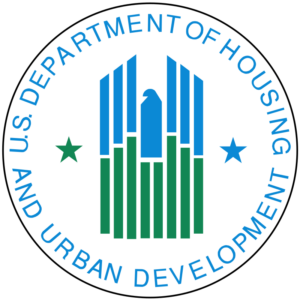
Community Development Block Grant Disaster Recovery (CDBG-DR)
Community Development Block Grant Disaster Recovery (CDBG-DR) program provides flexible funds to help cities, counties, and states recover from presidentially-declared disasters when appropriated by Congress. CDBG-DR funds can only be spent to meet the recovery needs caused by the disasters in the locations specifically stated in the appropriation. Funds can be used for disaster relief, long-term recovery, restoration of infrastructure, housing, and economic revitalization. It is administered by the U.S. Department of Housing and Urban Development (HUD).
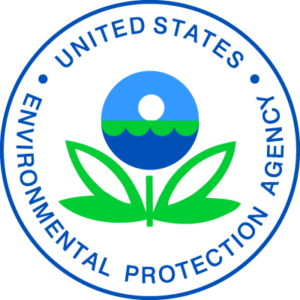
Drinking Water System Resilience Program
The Environmental Protection Agency’s (EPA’s) Drinking Water System Infrastructure Resilience and Sustainability Program funds projects in underserved communities and small communities (fewer than 10,000 people). Projects must increase resilience of drinking water systems to natural hazards, including wildfire. Planning and infrastructure improvements are funded.

Coalitions & Collaboratives (COCO)
Coalitions & Collaboratives (COCO) supports place-based groups to bring expertise, resources, and funding to support the growth of newly forming groups that follow transparent and collaborative processes to protect the environment, communities, and economic interests.

Community Navigators
The Community Navigators initiative helps provide equitable access to Inflation Reduction Act funding. Forest Service employees and partner organizations work directly with targeted communities to provide support and guidance to access programs, services, and potential funding opportunities.
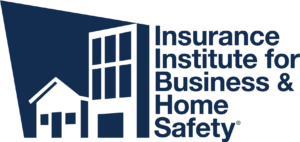
Suburban Wildfire Adaptation Roadmaps
The Insurance Institute for Business & Home Safety developed the Suburban Wildfire Adaptation Roadmaps to provide decision trees for homes and businesses to reduce vulnerability to wildfire. When put into action by homeowners, business owners, and ultimately whole communities, the risk curve can be bent downward and limit the catastrophic reach of wildfires.

Wildfire Ready Home
We can’t stop the wildfire, but The Insurance Institute for Business & Home Safety has the science to provide measures to reduce property losses and prevent avoidable suffering. The Wildfire Ready Home website provides the specific actions homeowners can take.
